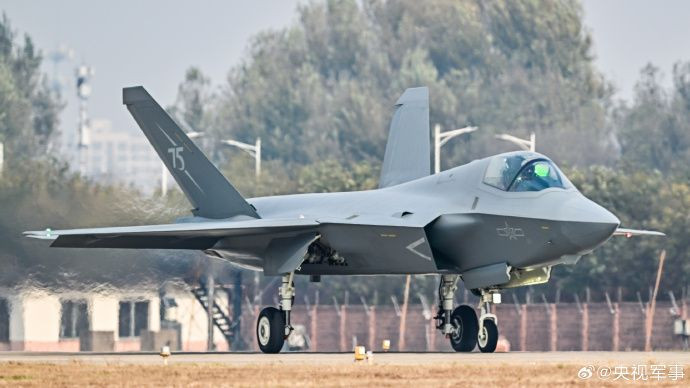China is expediting the delivery of its advanced J-35A fifth-generation stealth fighters to Pakistan, with the first operational batch now expected to arrive by early 2026, six months ahead of schedule, according to defense sources and Pakistani military reports. The accelerated transfer comes amid escalating tensions in South Asia, driven by renewed cross-border friction between Pakistan and India.
The J-35A, unveiled at a Chinese airshow in November 2024, marks China's second stealth fighter after the J-20, positioning the country as the only other nation besides the United States to operate multiple fifth-generation aircraft. The aircraft has entered full-rate mass production at the Shenyang Aircraft Corporation, and its export to Pakistan would be China's first known foreign sale of a stealth platform.
Defence Security Asia reports that the expedited timeline follows high-level visits between military leaders, including Pakistan Air Chief Marshal Zaheer Ahmad Babar's trip to Beijing and a reciprocal visit by General Zhang Youxia to Islamabad. Pakistani pilots are reportedly undergoing training in China, signaling an imminent integration of the J-35A into the Pakistan Air Force (PAF) fleet.
Zia Ul Haque Shamshi, a retired Pakistan Air Force Air Commodore, said: "India is not expected to acquire fifth-generation fighter jet capabilities within that timeframe, which will provide Pakistan with a strategic edge."
The aircraft is expected to significantly narrow Pakistan's qualitative airpower gap with India, which currently operates fourth-generation Su-30MKIs and 4.5-generation Rafales, but lacks stealth capabilities. Brendan Mulvaney, Director of the U.S. Air Force's China Aerospace Studies Institute, remarked, "It has put the Pakistani Air Force ahead of the Indian Air Force by tying Pakistan and China further."
Reports suggest China is offering the J-35A to Pakistan at a 50 percent discount with flexible payment terms-terms widely interpreted as a geopolitical reward for Pakistan's strategic alignment with Beijing and its role in recent military skirmishes with India. The J-35A has been developed with export in mind, unlike the J-20, which is restricted to domestic use due to sensitive technologies.
Pakistan has reportedly placed an initial order for 40 J-35As, with the platform designed for both land-based and naval operations. A carrier-capable variant is currently under development for deployment from China's Type 003 aircraft carriers.
Equipped with advanced stealth shaping, twin-engine redundancy, and an internal weapons bay capable of carrying long-range PL-17 air-to-air missiles, the J-35A offers full-spectrum situational awareness through AESA radar and distributed infrared sensor systems. Its design allows for networked operations, functioning as a nodal asset similar to the U.S. F-35's role within the Joint All-Domain Command and Control (JADC2) framework.
In a recent statement to Chinese state media, a chief engineer from the Shenyang Aircraft Design Institute described the J-35A as "designed with enhanced low-observability, digitized battlefield integration, and AI-driven smart combat features," adding that "notable progress and innovations have been realized across multiple areas."
The fighter's mass production marks China's maturation in stealth aircraft development, and its export to a key Belt and Road Initiative ally like Pakistan is likely to intensify strategic calculations across the Indo-Pacific. The Pentagon has previously identified the Chinese air force as the largest in the region and the third largest globally, with more than 2,400 combat-ready aircraft.






